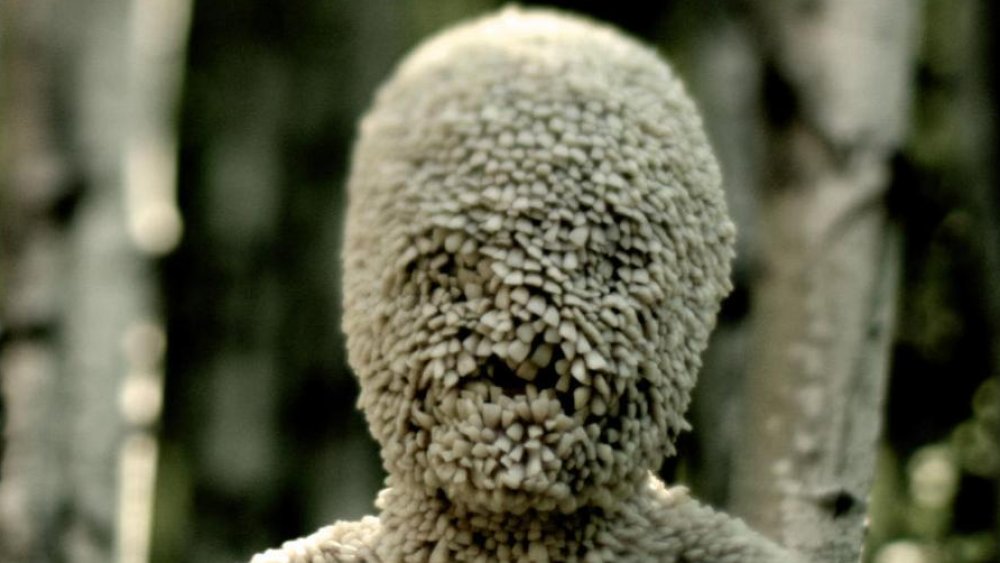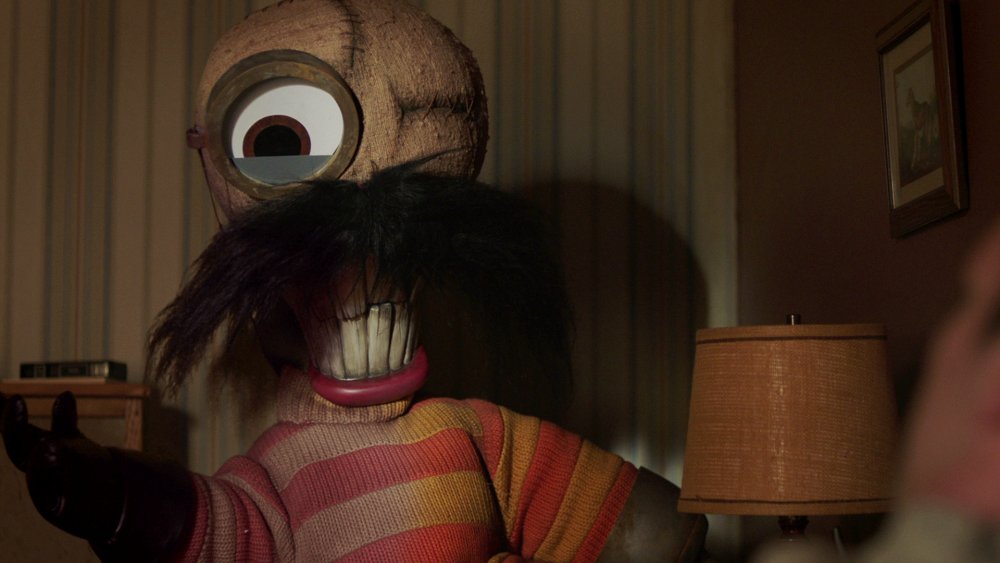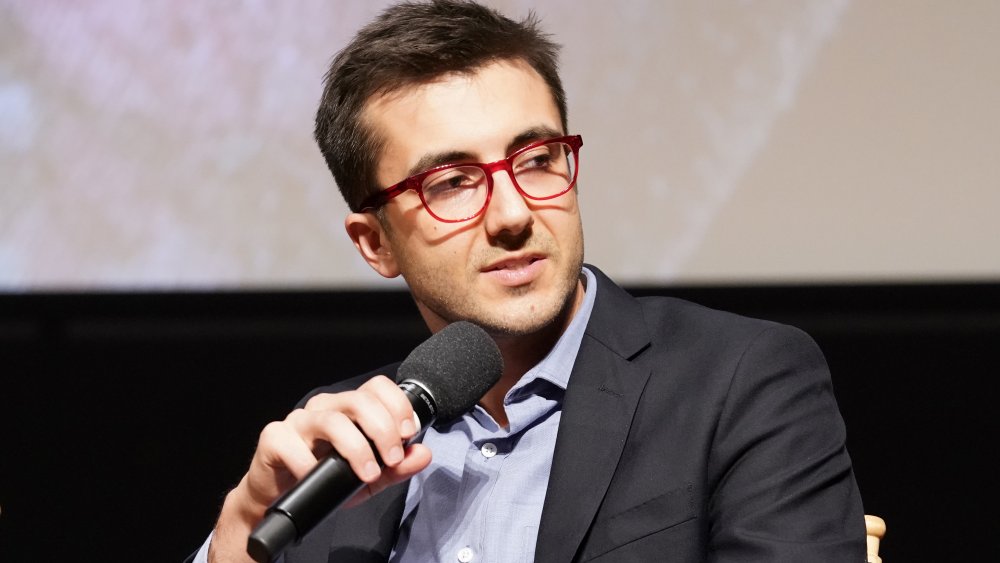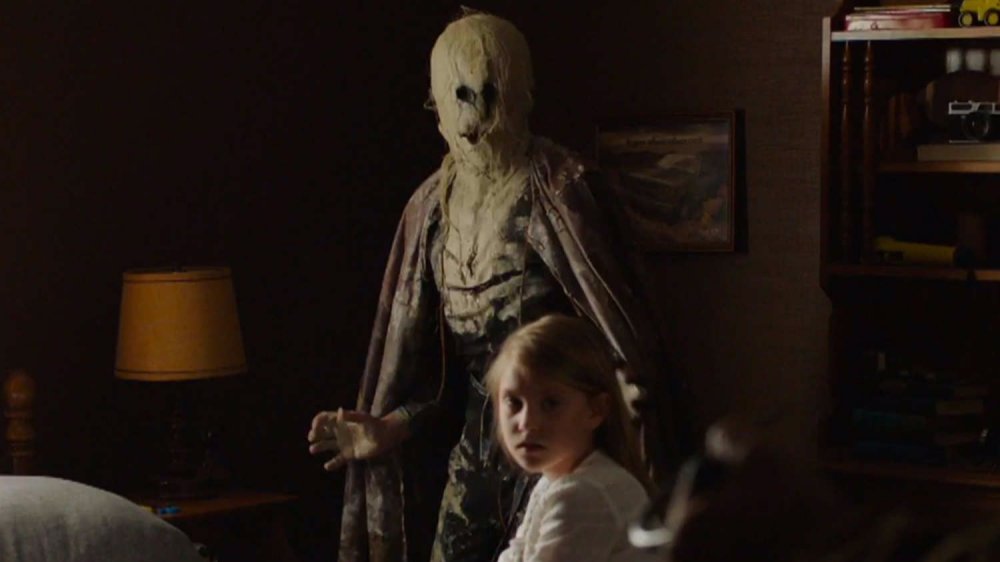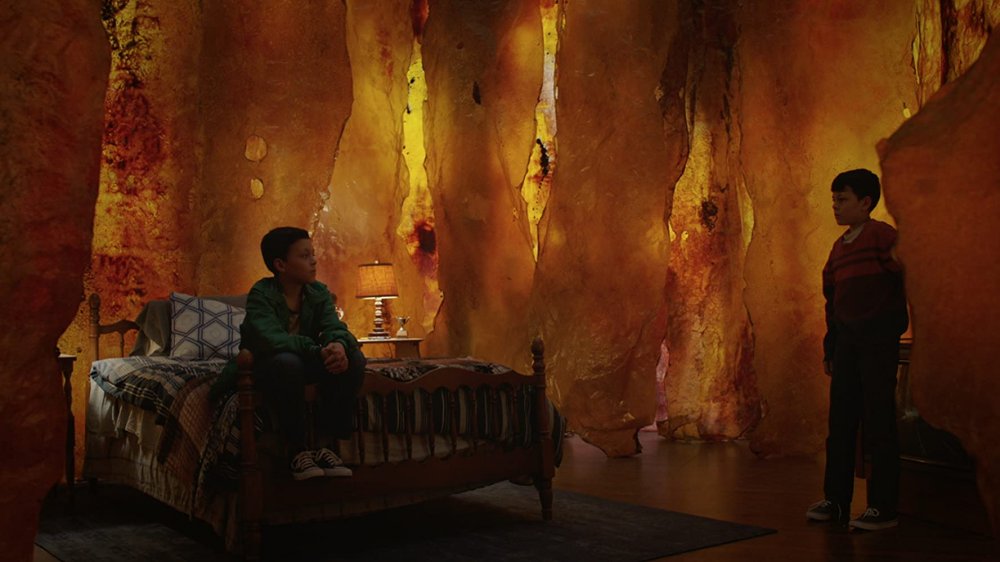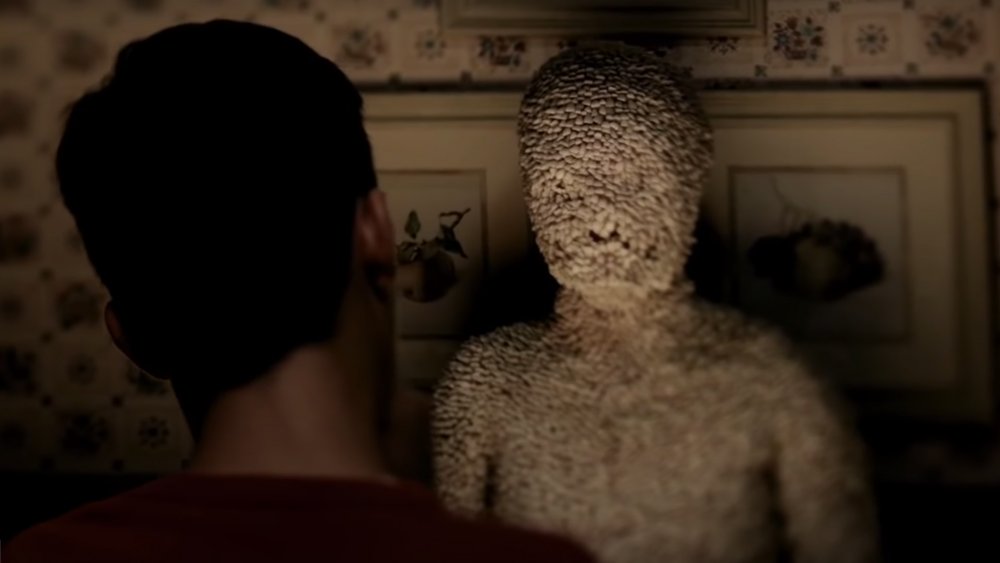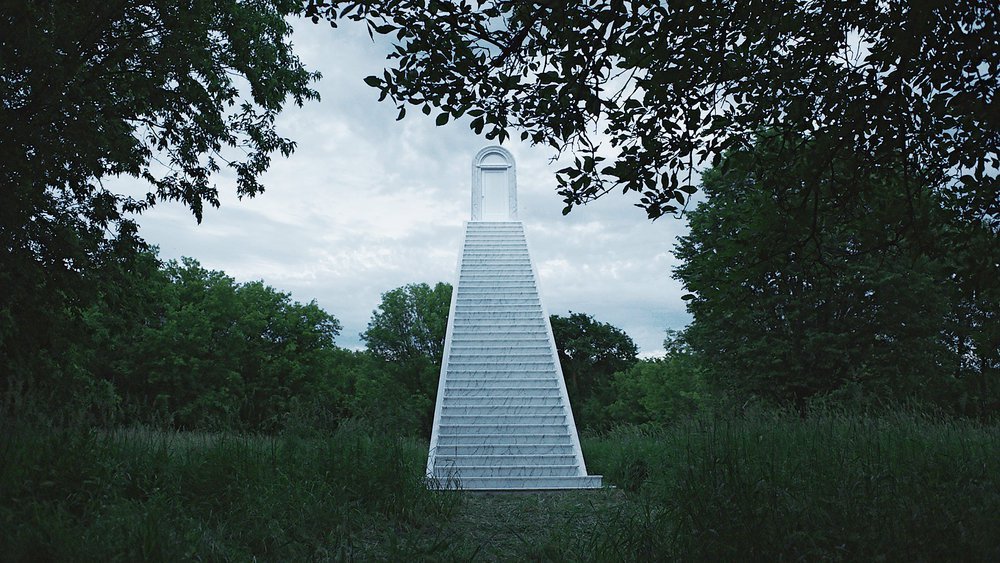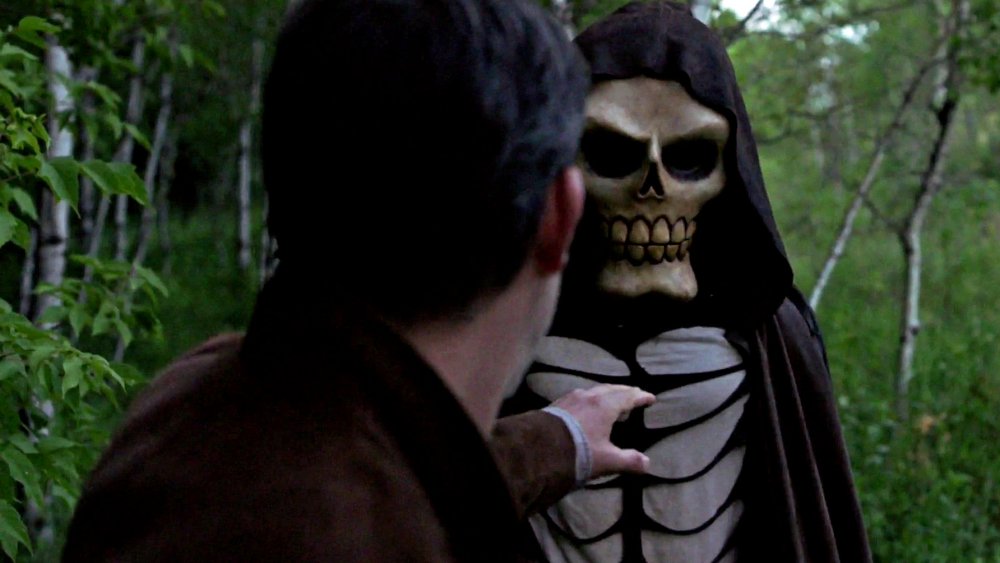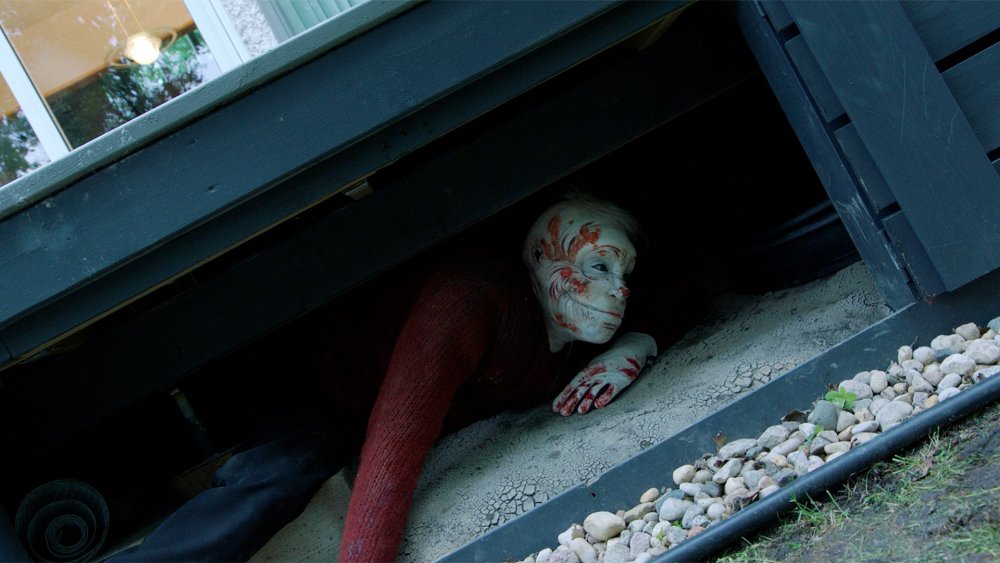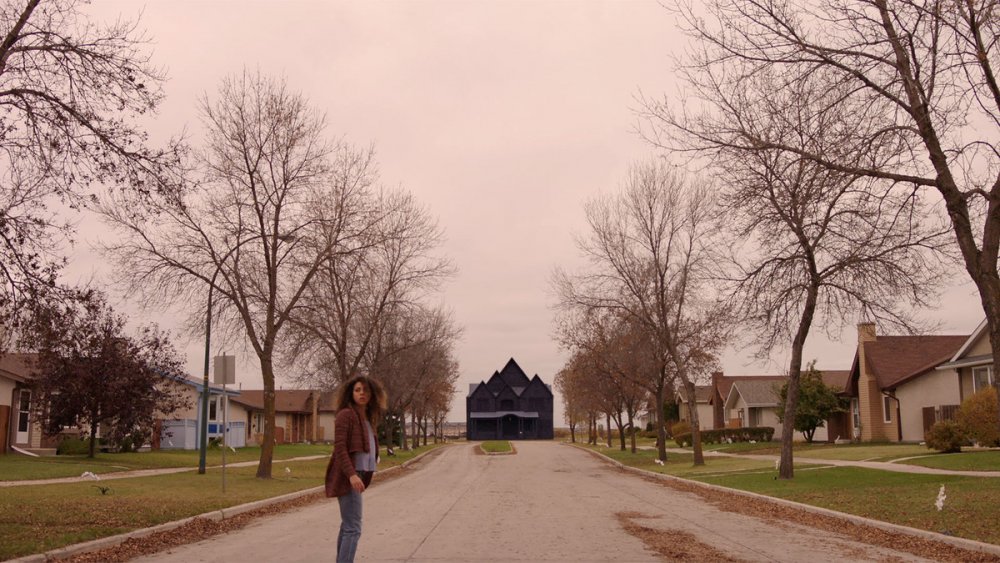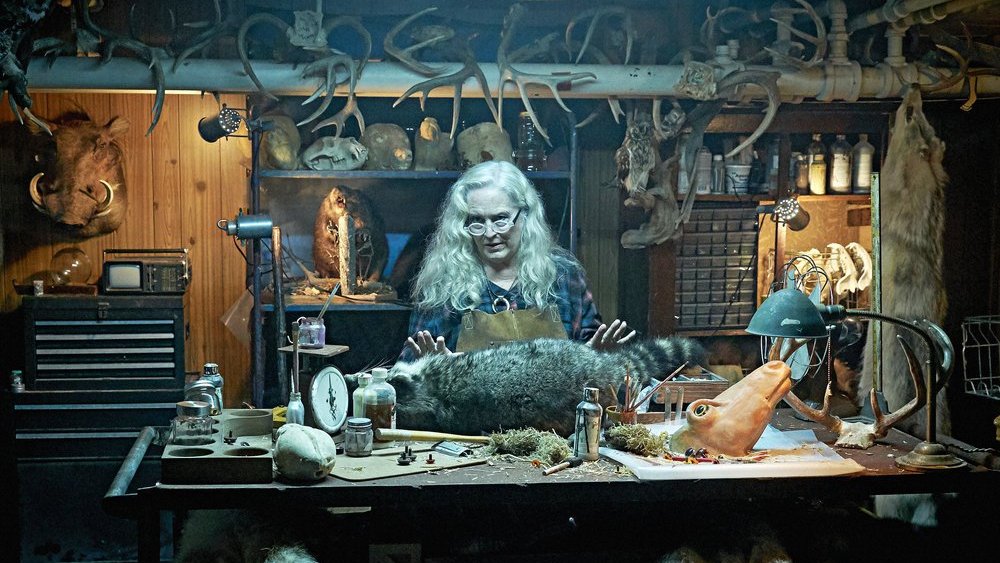The Untold Truth Of Channel Zero
While the silver screen has recently been busy delivering horror hits like It and Midsommar, the genre has been thriving on the small screen as well. With new series like The Haunting of Hill House gaining popularity on Netflix and the continued success of big names like American Horror Story and Supernatural, horror has never been bigger on television.
Channel Zero is a sterling example of our current horror heyday. Released in 2016 on the Syfy Channel, this show offers a rare concoction of terror and creativity that can be hard to find in a genre plagued with jump-scares, hormonal teens, and way too many demon clowns. An anthology series, Zero tackles a different story arc during each of its four seasons. This set-up allows for real innovation in terms of storytelling and visual design, which has landed it consistently high critical reviews. For those curious about how the creators achieved the show's chilling scares, terrifying creature designs, and twisty plots, we offer this assemblage of facts, origins, and truly terrifying trivia about Channel Zero.
The show is based on creepypasta
Channel Zero takes inspiration from internet horror stories known as creepypasta. These short pieces, often created anonymously, circulate around the internet for years. Some are obviously lurid, involving supernatural entities like Slenderman. Others, however, derive their scare-factor from being scrupulously realistic. The Russian Sleep Experiment, for example, terrorizes by seeming quite a lot like actual stories of military experimentation.
Each season of Channel Zero is based on a different creepypasta story — notably, ones with identifiable authors. Season one's arc is based on Kris Straub's "Candle Cove." Season two covers Brian Russell's "The No-End House." Season three is based on Kerry Hammond's "Search and Rescue Woods." Finally, season four is based on Charlotte Bywater's "Hidden Door."
Channel Zero doesn't just adapt these creepypasta classics directly, however. When talking about the show on Reddit, the show's creator Nick Antosca said, "Every season I think of as a kind of fan fiction of the original creepypasta. In a way it's ... a new mythology of the original story."
Who is showrunner Nick Antosca?
When it comes to the macabre, Channel Zero showrunner Nick Antosca has had plenty of experience. One of his first significant jobs in television was writing a pair of episodes for MTV's supernatural drama Teen Wolf. Antosca followed this up by writing and producing several other series, including Last Resort, Believe, and The Player. Perhaps most notably, Antosca served as a writer and executive producer on several episodes of the acclaimed NBC gore-fest Hannibal. In addition, Antosca worked as a writer for horror films The Forest and The Cottage, as well as the short film The Girlfriend Game, based on a short story collection he published in 2013.
After his work on Channel Zero, Antosca co-created Hulu's The Act, a true crime series based on the case of Gypsy Rose Blanchard. Though it's not strictly a horror story, The Act is a deeply unsettling tale of abuse, deception, and murder that Antosca's experience with horror likely proved useful on. His upcoming productions include Antlers, the television show Brand New Cherry Flavor, and Syfy's Chucky series. Outside of film and television, Antosca has also written several novels, including Fires, Midnight Picnic, and The Hangman's Ritual. Though he wrote the majority of these titles before writing for television and film, many contain the same sense of horrific unreality that fans of Channel Zero already love.
Why the show had different directors each season
Channel Zero is unique in that it employs a different director each season. In total, the series has four directors: Craig William Macneill, Steven Piet, E.L. Katz, and Arkasha Stevenson. In talking about why he chooses to let others direct projects he masterminds instead of doing so himself, Nick Antosca said, "When a director can take what I've written and honor my intention and also make it better and bring something even more elevated to it, that's my favorite thing."
For Channel Zero, Antosca wanted to seek out up-and-coming talent and give them a season they could make their own. "I want every season to be a showcase for somebody really exciting who I love, and [for it] to have its own flavor and voice," he explained. "Every season has a really kind of different visual style and tone." In the case of Arkasha Stevenson, who directed Channel Zero: Butcher's Block, Antosca said that he became interested in her work after seeing the first episode of her series Pineapple, which was shown at the Sundance Film Festival. Antosca knew he had found promising talent — and he was right.
Influences from other films and filmmakers
One of the many reasons Channel Zero is a compelling example of the horror genre is because it draws influence from the excellent media that came before it. In an interview with Polygon, Antosca referenced a variety of influences, including the show Twin Peaks, in discussing how he achieved Channel Zero's creepy suburb vibes. In the same interview, Antosca also cited the works of Roman Polanski and Stanley Kubrick as being inspirations for the cinematography and general approach to filming in Channel Zero. Talking about the pair's influence on how Channel Zero looks, Antosca noted, "Negative space is so important to horror, and it's what the greatest horror directors, like Kubrick and Polanski, really appreciate visually."
Another notable director whose work served as a reference for the series was Dario Argento, the creative mind behind nightmarish horror classics Suspiria and Phenomena. When talking about his influences on Reddit, Antosca said that it is the way Argento's films have "a beautiful nightmare quality" that he brings with him to his own projects.
Antosca's nightmares inspired some of the horrors
Many creators will call their latest project the show or film of their dreams. For Nick Antosca, that cliche is all too real: Channel Zero is the show of his literal nightmares. In an interview with Polygon, Antosca said, "I'm in a place that I never expected myself to be, which is having a lot of creative freedom — and getting to make a show where I literally have nightmares and put them on screen."
One of the more unsettling products of Antosca's mind is the Tooth Child from the first season of the show. He is aptly named, as he is a small boy who is covered from head to toe in baby teeth. In an interview with Bloody Disgusting, Cassandra Consiglio, the actress who wore the tooth suit, said, "When I found out it was something that Nick had actually dreamed about, I was so excited to have the opportunity to bring the character to life." Kudos to her — not many people would be comfortable donning a costume as horrifying as the Tooth Child's.
A barrier to using certain creepypastas
It's easy to assume that creepypasta must be easy to adapt. They're just anonymous internet stories, after all, lying around for any old filmmaker to pick up, dust off, and turn into ratings gold. However, the creative process that goes into adapting creepypasta for the small screen isn't exactly a walk in the park. When discussing which stories made it to the Channel Zero writers' room, Nick Antosca said on Reddit, "I would love to do Russian Sleep Experiment. We haven't been able to do it because we can't find the original author, and that's been a challenge for a number of famous creepypasta."
In many cases, creepypasta stories have no known author. Often, the story has been shared by so many people in so many different online spaces, finding a single source claiming the story as their own is near impossible. Moreover, even if an original source can be found, the writer often chose to be anonymous. Given these obstacles, creepypastas with identifiable authors become the obvious choice for adaptation. Antosca elaborated on this point, stating, "I get asked from time to time, well, why don't you do this story or that story? ... In many cases it's because we just can't find the author ... we want to honor the original author, give them credit, give them money."
They operated on a low budget
Despite having a small budget, Channel Zero was able to create high-quality episodes by finding interesting workarounds. When talking to PopMatters, Antosca alluded to one fundamental way of keeping costs down: "Our budget is small, we can't afford big stars with high quotes." Another interesting tactic that Antosca used had to do with how the seasons were broken down in his dealings with Syfy. As the showrunner told Film School Rejects, "When Syfy was playing with low-budget models for new shows, we got this idea of, 'Well, if we do 12 episodes but two seasons at once, then we could have one director do the entire six-episode season.'"
Another way the show kept costs down was by actively seeking out directors with low-budget experience. As Antosca put it, "By the standards of TV, our budget is like a micro-budget, but by the standards of indie film, it's pretty good. So, you bring in indie film directors who are resourceful and used to working under extreme constraints, and we're able to maximize our production value." By making these savvy personnel and logistical decisions, Antosta was able to stretch each and every dollar he was given by the network.
How the monsters manifest
Antosca told Polygon that he dreamt of season one's Tooth Child while he was still a writer on Hannibal. But when it came time for the Tooth Child to debut in Channel Zero, he turned to special effects wizard Greg Nicotero for help in creating the creature. Nicotero sold Antosca the concept art for one dollar once he became the makeup and VFX artist on The Walking Dead and found himself too busy to continue work on the project.
Cassandra Consiglio, the actress who played the Tooth Child, told Bloody Disgusting, "We have made many estimations of how heavy the suit was and came to the conclusion it is about half my body weight which made it quite heavy due to the extensive amount of teeth." Please note, however, that the suit does not, in fact, contain any actual human teeth.
When it comes to Pretzel Jack, another one of Channel Zero's signature monsters, Antosca said that the character was essentially created for contortionist Troy James. As Antosca told Polygon, "Pretzel Jack came about because of Troy James, who had a tiny part in Butcher's Block. I just saw him doing that and was like, 'F***, he's gotta come back.'" Explaining the constant in all of his monsters, Antosca told Film School Rejects that he purposefully tries to make his monsters empathetic to make the stories more exciting, and that this consideration is vital in both design and casting.
Antosca has issues with the suburbs, and it shows
Suburbia provides the perfect playground for horror stories to subvert audiences' expectations regarding safety and quaintness. We've seen the creepy suburb trope employed by a whole host of creators, including Tim Burton, David Lynch, and John Carpenter. In Channel Zero, Nick Antosca finds a way to depict suburbia all his own.
When discussing what makes the suburbs so scary in horror, Antosca told Polygon, "That landscape ... the suburbs anywhere in kind of a nondescript America, feels like there's so much unspoken and so much under the surface." Channel Zero turns the suburbs into a horror landscape by emptying them of all comfort, familiarity, and, for the most part, people. Instead, they are crowded with monsters — often ones with origins in the quaint details of suburbia itself. The Tooth Child is, after all, a child.
Though this portrayal of the suburbs runs through several seasons of the show, Antosca says that this wasn't part of Channel Zero's purpose and that it was simply the result of working with what he knows. According to the showrunner, "I didn't set out to do that in Channel Zero, but in exploring a landscape full of dread, we ended up going back to the suburbs a couple times."
The show was cancelled after 4 seasons
While Channel Zero has undoubtedly carved out a loyal following of horror hounds, the series didn't draw in nearly as many viewers as more mainstream titles like American Horror Story or The Walking Dead. According to The Hollywood Reporter, the first season of Channel Zero was the series' most-watched, with an average of 543,000 same-day viewers. By the time season four rolled around, however, Channel Zero had dwindled to about 265,000 viewers.
It is likely because of these low viewership numbers that Syfy decided to pull the plug on Channel Zero, ultimately canceling the show after the fourth season, despite consistent positive feedback from critics and audiences. Following the cancellation, Nick Antosca posted the following message to his Instagram: "I can't complain too much about doing four stories I loved with people who I loved working with."
However, Antosca doesn't seem to have completely given up hope of continuing his anthology series. In that same Instagram post, he said, "I loved making this show and I would have loved to do more ... There are stories we didn't get to tell and creatures you didn't get to see, but still might." Though Channel Zero may have met an untimely end, it's possible we haven't seen the end of Antosca's horror anthology. Let's hope it rises from its grave soon.
